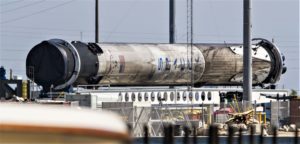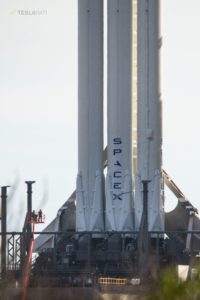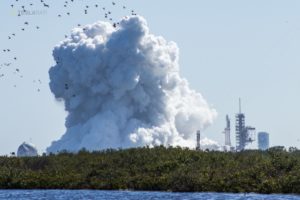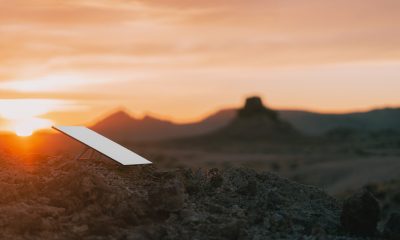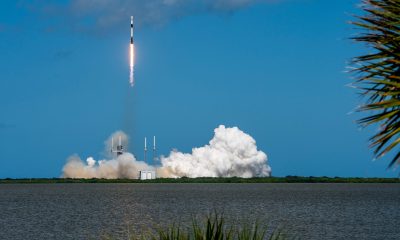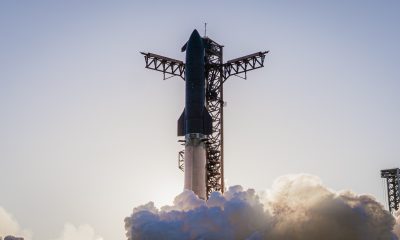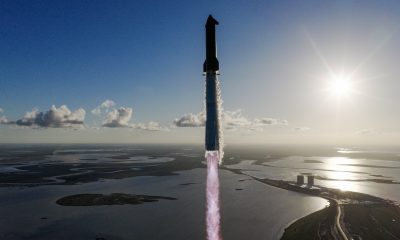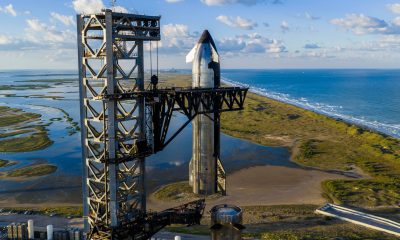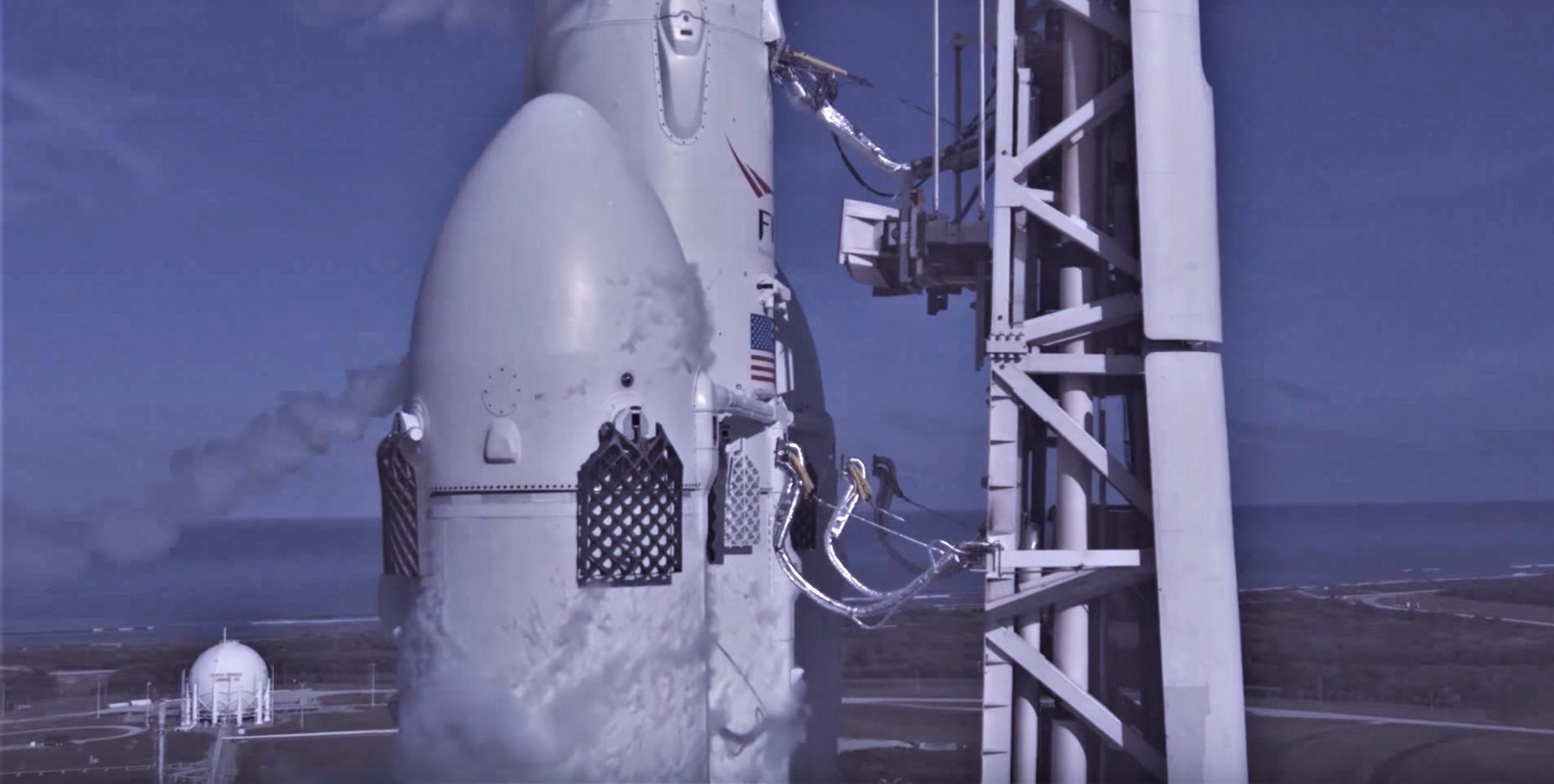
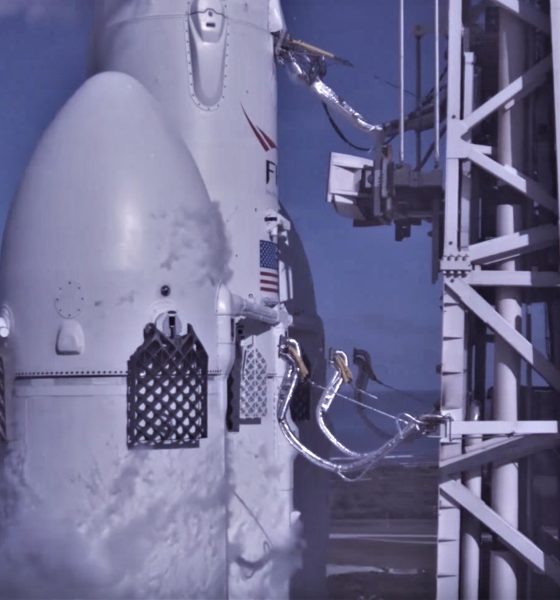
News
SpaceX’s Falcon Heavy secures second commercial launch contract in 9 days
Major broadband satellite operator Viasat has officially committed to launching one of its powerful next-generation Viasat-3 satellites on a SpaceX Falcon Heavy rocket, set to occur sometime between 2020 and 2022.
Nine days after Swedish satellite communications company OvZon made its own announcement of a Falcon Heavy launch contract, Viasat’s Falcon Heavy selection marks SpaceX’s third commercial launch contracted on the nascent heavy-lift rocket.
Viasat, SpaceX Enter Contract for a Future ViaSat-3 Satellite Launch: https://t.co/DOlUIcgPQF Photo Credit: @SpaceX #VS3 #ViasatInc pic.twitter.com/vM1duf1x41
— Viasat (@viasat) October 25, 2018
In 2016, Viasat announced that a planned launch contract with SpaceX for a heavy Viasat-2 satellite would be transferred to Arianespace to avoid major delays caused by Falcon Heavy’s torturous path to launch debut. As a contractual compromise, Viasat optioned Falcon Heavy for one of three launches of its three next-generation Viasat-3 satellites, an option that was exercised to become a true launch contract today.
Viasat’s 2016 decision ultimately proved to be expertly calculated, and SpaceX’s Falcon Heavy was effectively put on the back burner after a September 2016 failure, pushing its launch debut into 2018. Delays aside, Falcon Heavy ultimately debuted in February 2018 with a mission that both became a bit of an icon – CEO Elon Musk’s own Tesla Roadster and a SpaceX-suit-wearing mannequin were sent beyond Earth’s orbit – while also successfully demonstrating a particular launch capability of interest to certain high-value customers.
- It’s currently unclear whether B1046 or B1048 will become the first SpaceX rocket to fly three times. (Tom Cross)
- Falcon Heavy: it’s not small. (Tom Cross)
- The sheer power of Falcon Heavy is eminently clear in this beautiful capture by Tom Cross. (Tom Cross)
Coasting to success
During Falcon Heavy’s maiden launch, SpaceX took it upon itself to use the unique opportunity – a mission where the only payload at risk was functionally worthless – to test a number of technologies that the company had yet to personally prove out. In order to place certain payloads in orbits as convenient, efficient, and high-energy as possible, rocket upper stages can sometimes be required to spend hours orbiting Earth between two or more engine ignitions and burns.
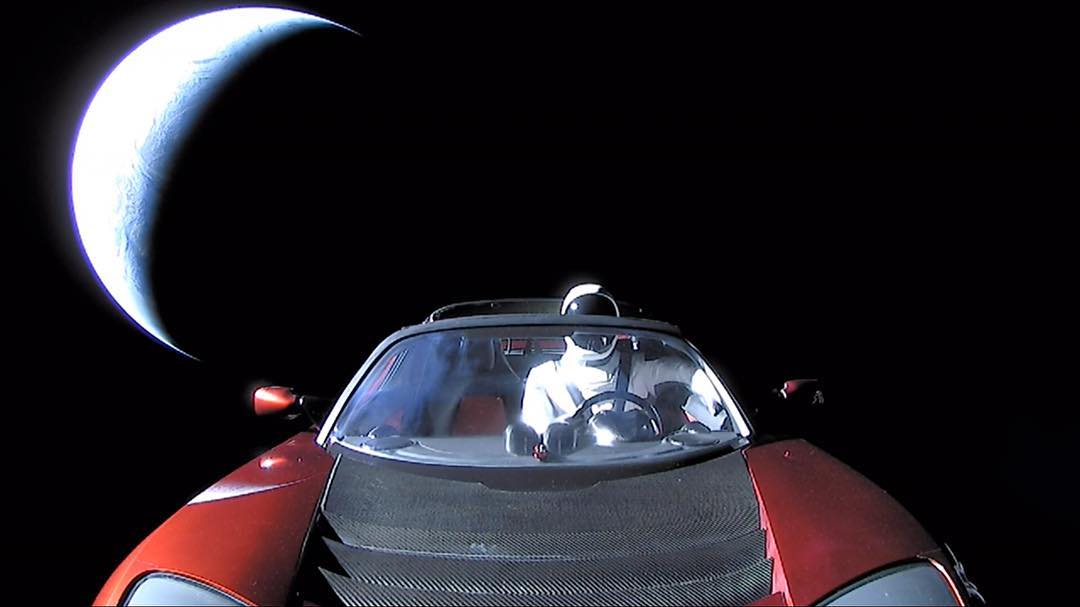
Once successfully in orbit, the performance potential of upper stages grows dramatically thanks to the increased efficiency of vacuum-optimized rocket engines and major improvements in thrust-to-weight ratios, having already consumed a majority of the fuel and oxidizer loaded prior to launch. The problem is that keeping a large upper stage alive in orbit – while preserving enough liquid propellant to perform its job – is extraordinarily difficult. Notably, the thermodynamic environment alone is a massive hurdle – aside from expanded power supplies, radiation-hardened or resilient avionics, and multi-engine-restart capabilities, some combination of coolers, insulation, and/or tank stirrers must be involved to prevent SpaceX’s already-supercooled liquid oxygen and kerosene (RP-1) from changing phases into a solid or a gas.
During Falcon Heavy’s debut, SpaceX demonstrated what must have been a nearly flawless six-hour coast of the rocket’s Falcon 9 upper stage – in the last four months alone, SpaceX has officially received three new Falcon Heavy contracts all hoping to take advantage of that long-coast capability. Critically, this allows SpaceX to send large satellites directly or almost directly to geostationary orbits (GEO) instead of a more common transfer orbit (GTO), saving satellites from spending weeks or months completing their own orbit-raising maneuvers and the hundreds or thousands of kilograms of propellant they require.
SpaceX's updated Falcon Heavy manifest:
– Arabsat 6A (NET early 2019)
– STP-2 (NET 2019)
– AFSPC-52 (NET September 2020)
– Ovzon (NET Q4 2020)
– Viasat-3 (2020-2022)Pending confirmed payload:
– Inmarsat— Michael Baylor (@MichaelBaylor_) October 25, 2018
Inmarsat, another long-time customer still in possession of old agreements for Falcon Heavy launches, may be next in line to announce firmer launch decisions for Global Xpress and Inmarsat 6 satellites once penciled in for Falcon Heavy in a 2014 contract – flight-ready hardware is expected to be ready for launch in the 2019-2021 timeframe.
For prompt updates, on-the-ground perspectives, and unique glimpses of SpaceX’s rocket recovery fleet check out our brand new LaunchPad and LandingZone newsletters!
News
Tesla sends clear message to Waymo with latest Austin Robotaxi move
It is the first expansion Tesla has made in Austin since the one on August 26. The company still operates in the Bay Area of California as well, referring to that program specifically as a “ride-hailing service.”

Tesla has sent a clear message to Waymo with its latest move to its Robotaxi program in Austin, Texas.
Tesla and Waymo are the two true leaders in autonomous ride-hailing to an extent. Tesla has what many believe is a lot of potential due to its prowess with the Supervised Full Self-Driving suite. It is also operating a driverless Robotaxi service in Austin with a “Safety Monitor” that sits in the passenger’s seat.
Tesla explains why Robotaxis now have safety monitors in the driver’s seat
The two companies have been competing heavily in the market since they both launched driverless ride-hailing services in Austin this year: Waymo’s in March and Tesla’s in June.
One of the main drivers in the competition between the two is service area size, or the geofence in which the cars will operate without a driver. In August, the two were tied with a service area of about 90 square miles (233.099 sq. km).
Tesla then expanded to about 170 square miles (440.298 sq. km) on August 26, dwarfing Waymo’s service area and expanding to freeways. Tesla’s freeway operation of the Robotaxi suite requires the Safety Monitor to be in the driver’s seat for safety reasons.
On Tuesday evening, Tesla made another move that sent a clear message to Waymo, as it expanded once again, this time to 243 square miles (629.367 sq. km).
This is according to Robotracker:
Here’s a comparison of Tesla’s geofence in Austin vs. Waymo’s
Tesla’s now spans 243 square miles, almost three times the size of Waymo’s at 89 square miles https://t.co/OCAHQDQhzb pic.twitter.com/wq5bHQXCp4
— TESLARATI (@Teslarati) October 29, 2025
It is the first expansion Tesla has made in Austin since the one on August 26. The company still operates in the Bay Area of California as well, referring to that program specifically as a “ride-hailing service.”
Yesterday, it expanded that service to the San Jose Mineta International Airport, something it has been working on for several months.
Waymo has its own set of distinct advantages over Tesla as well, as it operates in more cities and states than the EV maker. Waymo currently has its autonomous vehicle services in Phoenix, Arizona, San Francisco, Los Angeles, Austin, and Atlanta, Georgia.
Tesla plans to have half of the U.S. population with access to the Robotaxi platform by the end of the year.
News
Tesla exec reveals shock development with Cybercab
“If we have to have a steering wheel, it can have a steering wheel and pedals.”
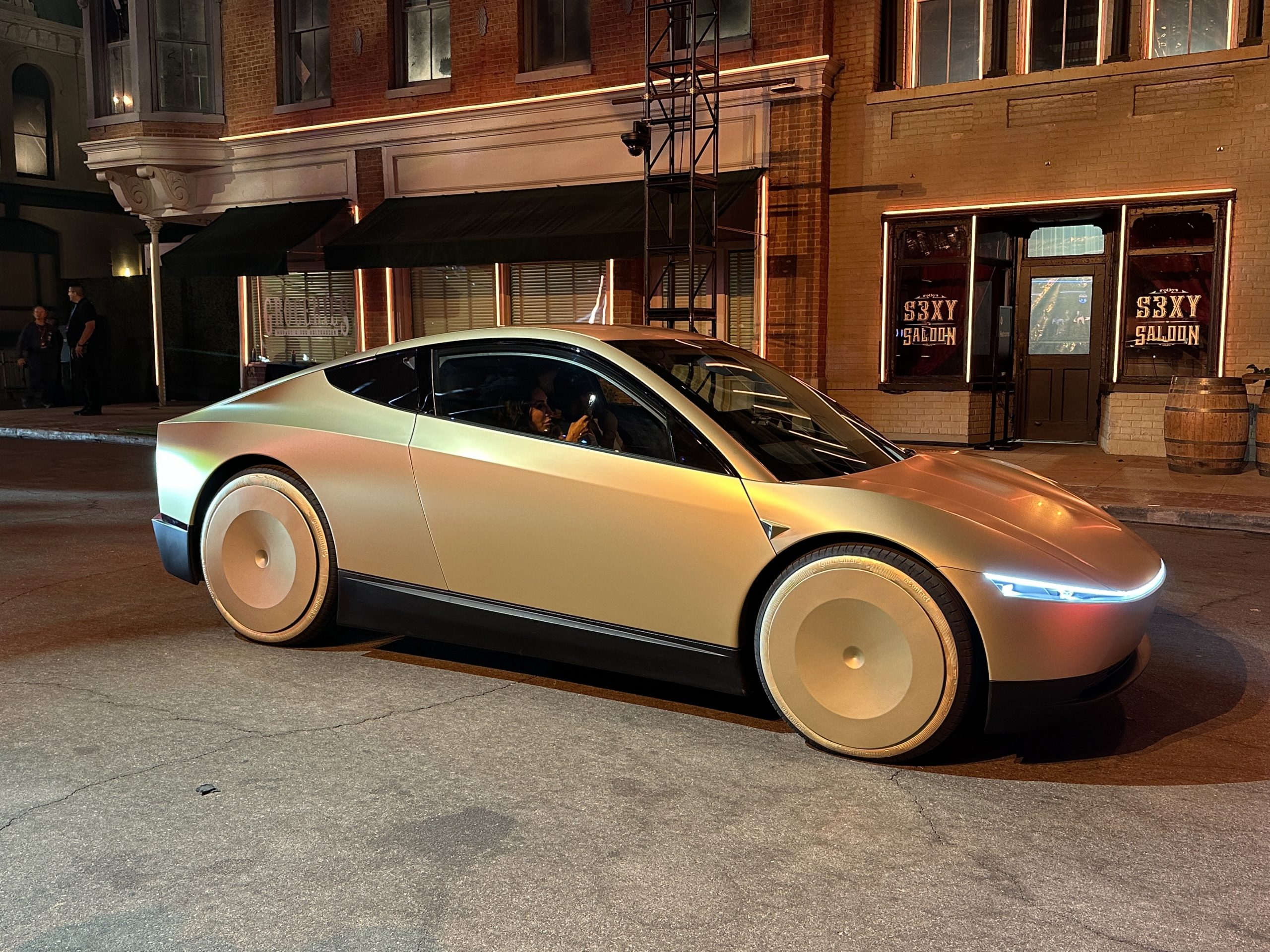
Tesla is planning to launch the Cybercab in the second quarter of next year, and it is designed to be fully autonomous, so much so that the company is planning to build it without a steering wheel or pedals.
However, a Tesla executive said today that the company could ditch that idea altogether in what would be a major shift from the plans the company, and especially its CEO Elon Musk, have announced for the Cybercab.
Earlier today, Robyn Denholm, the company’s Chair for the Board of Directors, revealed that Tesla would potentially switch up its plans for the Cybercab based on potential regulatory requirements.
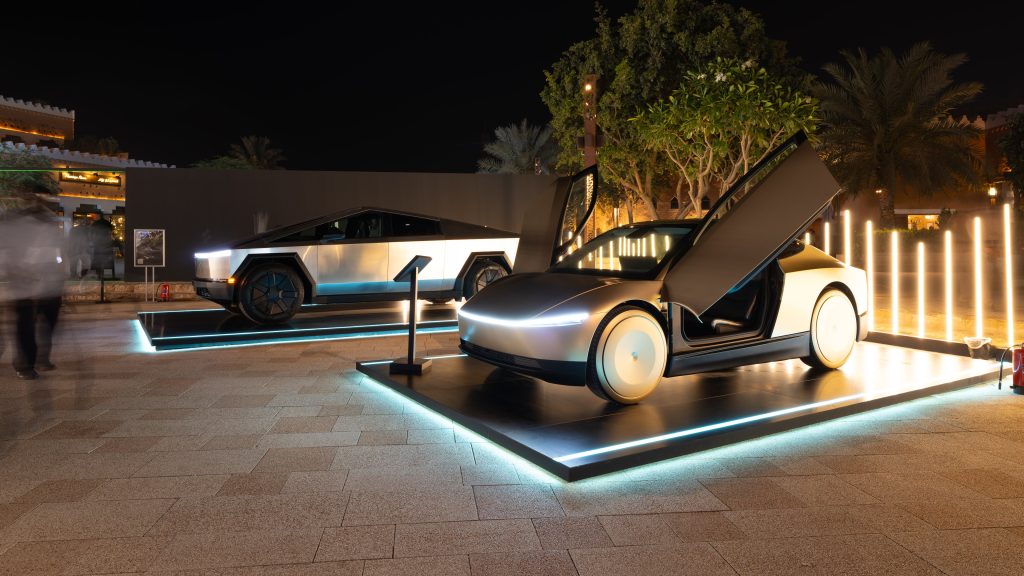
Credit: Tesla Europe & Middle East | X
Currently, even autonomous vehicles that operate for companies like Tesla and Waymo are required to have steering wheels and pedals. From a regulatory perspective, this could halt the plans Tesla has for Cybercab.
Denholm said in an interview with Bloomberg:
“If we have to have a steering wheel, it can have a steering wheel and pedals.”
Interestingly, Musk and Tesla have not veered away from the idea that the vehicle will be without these operational must-haves.
Since the vehicle was revealed last October at the We, Robot event in Los Angeles, Tesla has maintained that the car would be built without a steering wheel or pedals, and would equip two seats, which is what is statistically most popular in ride-sharing, as the vast majority of rides have only one or two passengers.
Musk doubled down on the plans for Cybercab as recently as last week, when he said:
“That’s really a vehicle that’s optimized for full autonomy. It, in fact, does not have a steering wheel or pedals and is really an enduring optimization on minimizing cost per mile for fully considered cost per mile of operation. For our other vehicles, they still have a little bit of the horse carriage thing going on where, obviously, if you’ve got steering wheels and pedals and you’re designing a car that people might want to go very direct past acceleration and tight cornering, like high-performance cars, then you’re going to design a different car than one that is optimized for a comfortable ride and doesn’t expect to go past sort of 85 or 90 miles an hour.”
Cybercab is fully conceptualized as a vehicle that has zero need for pedals or a steering wheel because it is aimed toward being fully reliant on a Level 5 autonomous platform.
Tesla is ramping its hiring for Cybercab vehicle manufacturing roles
Regulators could get in the way of this, however, and although the car could drive itself and be a great solution for ride-hailing, it might need to have these controls to hit the road in the future.
News
SpaceX opens up free Starlink service for those impacted by Hurricane Melissa
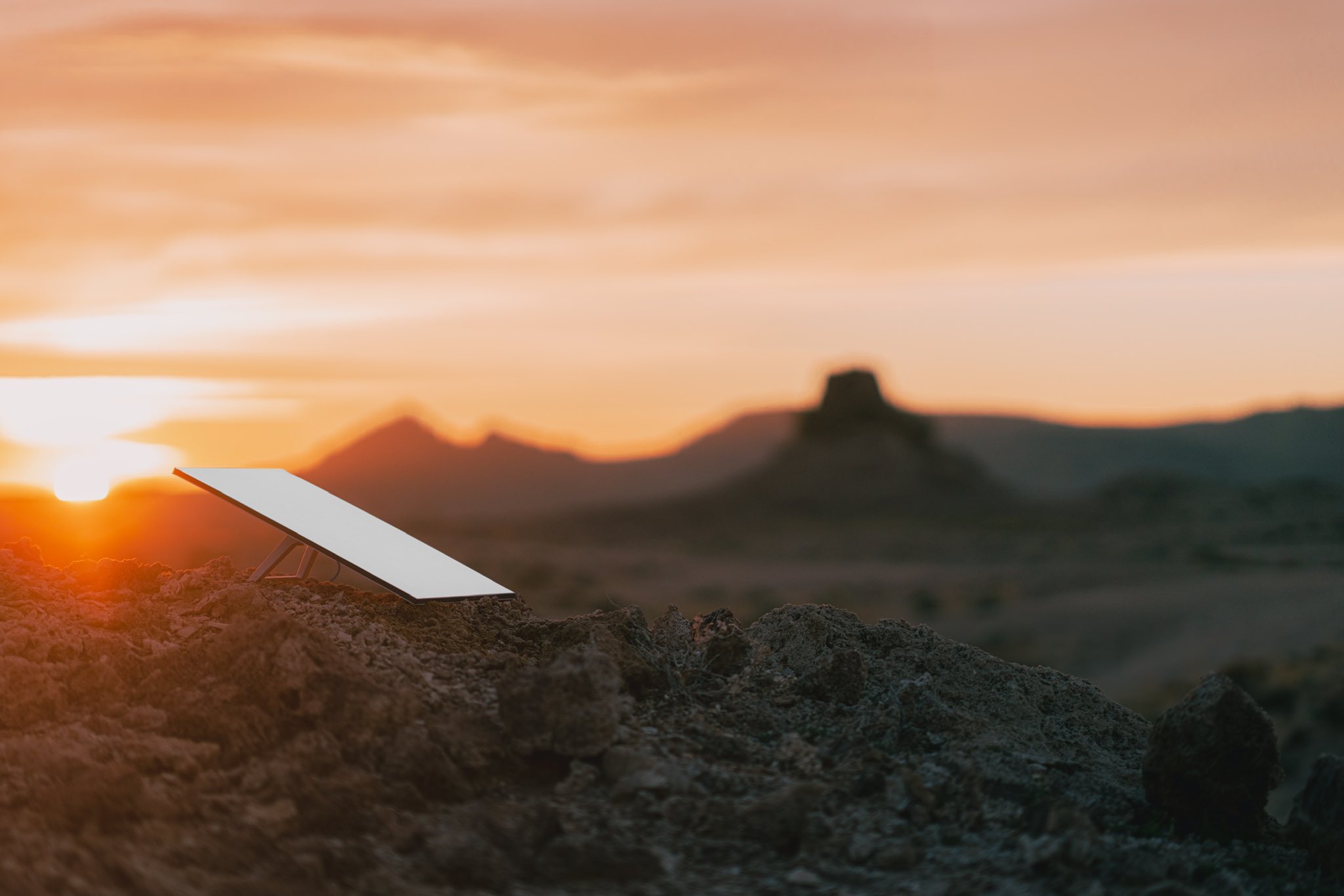
SpaceX is opening up its internet service, Starlink, to those impacted by Hurricane Melissa, as it made landfall in Jamaica and the Bahamas as a Category 5 storm.
Hurricane Melissa is expected to reach wind speeds of over 165 MPH over the next few days as it extends out into the Atlantic Ocean by Thursday and Friday.
Satellite imagery shows Hurricane #Melissa‘s growth from its formation on October 21 to a Category 5 hurricane through October 27, 2025. #HurricaneMelissa pic.twitter.com/goR3Hbgb9c
— The Weather Network (@weathernetwork) October 27, 2025
Citizens in Jamaica and the Bahamas have been preparing for the storm for the past week, getting necessary goods together and preparing for the massive storm to arrive. It finally did yesterday, and the first images and video of the storm are showing that it could destroy many parts of both countries.
Starlink is now being opened up for free until the end of November for those impacted by the storm in Jamaica and the Bahamas, SpaceX announced today:
For those impacted by Hurricane Melissa in Jamaica and the Bahamas, Starlink service is now free through the end of November to help with response and recovery efforts → https://t.co/fUko3xSviJ
— Starlink (@Starlink) October 28, 2025
It is a move similar to the one the company made last year as Hurricane Helene made its way through the United States, destroying homes and property across the East Coast. SpaceX offered free service for those impacted by the destruction caused by the storm.
The free Starlink service was available until the end of 2024.
Elon Musk’s companies have also made similar moves to help out those who are impacted by natural disasters. Tesla has offered Free Supercharging in the past, most notably during the California wildfires.
Tesla and SpaceX’s LA fire relief efforts: Cybertrucks, free Starlink and more
One major advantage of Starlink is that it is available for use in situations like this one, where power might be required to operate things like a modem and router.
Internet access is a crucial part of survival in these situations, especially as it can be the last leg some stand on to get in touch with emergency services or loved ones.
-

 Elon Musk2 weeks ago
Elon Musk2 weeks agoSpaceX posts Starship booster feat that’s so nutty, it doesn’t even look real
-

 Elon Musk2 weeks ago
Elon Musk2 weeks agoTesla Full Self-Driving gets an offer to be insured for ‘almost free’
-

 News2 weeks ago
News2 weeks agoElon Musk confirms Tesla FSD V14.2 will see widespread rollout
-

 News2 weeks ago
News2 weeks agoTesla is adding an interesting feature to its centerscreen in a coming update
-

 News2 weeks ago
News2 weeks agoTesla launches new interior option for Model Y
-

 News2 weeks ago
News2 weeks agoTesla widens rollout of new Full Self-Driving suite to more owners
-

 Elon Musk2 weeks ago
Elon Musk2 weeks agoTesla CEO Elon Musk’s $1 trillion pay package hits first adversity from proxy firm
-

 News1 week ago
News1 week agoTesla might be doing away with a long-included feature with its vehicles

